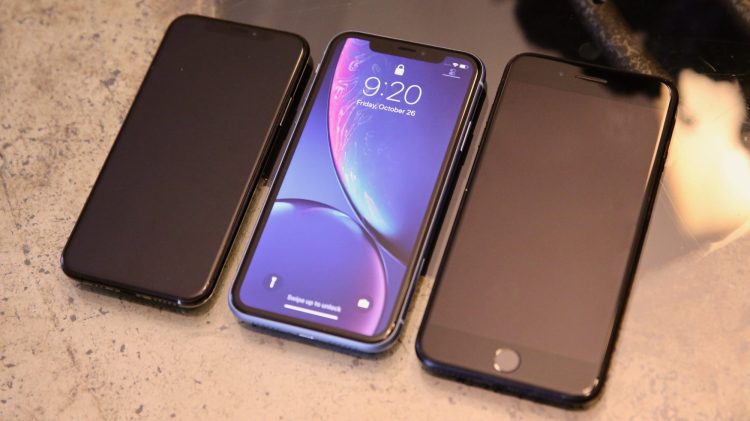When it comes to Apple developing its own modems for iPhones, iPads, and Apple Watches, the writing’s been on the wall for so long that further confirmations hardly seem like news. That’s why I was only slightly surprised when Reuters reported today that Apple’s processor chief Johny Srouji began leading an in-house modem development team last month. Assuming the report is accurate, my only question is how that could possibly have taken so long to happen.
Srouji joined Apple in 2008 as a VP of hardware technologies, leading development of Apple’s A4, the company’s first system-on-chip, and became the division’s SVP in 2015. As a direct report to Apple CEO Tim Cook, he’s currently one of only 17 executives on Apple’s official Leadership page, and responsible for all of Apple’s A-series, M-series, S-series, and T-series chips.
Calling modems important to Apple would be an understatement. The company’s most popular products are literally defined by that component — Apple sells around 200 million iPhones each year, compared with maybe 10 to 20 million similar but modemless iPod touches — and modem technology is continuously improving. iPhones have moved from 2G (2007) to 3G (2008) to 4G (2012) standards, and as other phone makers are preparing to release 5G phones, Apple’s latest iPhone XS models added late 4G (“LTE Advanced” or “Gigabit LTE,” akin to 4.8G) support to come closer to 5G speeds.
Since Apple has famously said that it needs to control the key elements in its products, it’s hard to believe that it would have been relying all this time on other companies’ modems, but that’s the reality — Apple buys modems from Qualcomm and Intel, then designs antenna systems that will fit inside its phones, tablets, and watches. It takes a lot of time and effort to properly test each new modem antenna for global use, and each time an extra antenna is added to move 4G performance closer to 5G, an internal or external redesign is needed. (That’s why the iPhone XS has new and asymmetrical antenna bars on its frame compared with the iPhone X.)
June 5th: The AI Audit in NYC
Join us next week in NYC to engage with top executive leaders, delving into strategies for auditing AI models to ensure fairness, optimal performance, and ethical compliance across diverse organizations. Secure your attendance for this exclusive invite-only event.
As I’ve noted in prior articles, the transition to 5G is particularly perilous for Apple. Almost every Android smartphone maker is using 5G modem and antenna components from Qualcomm, which appears to have a major lead over Intel in producing phone-sized 5G parts. But Apple picked a fight with Qualcomm over its modem patent licensing fees, and apparently decided to wait for an Intel 5G modem in protest. Intel is now racing to get a viable 5G modem finished in time for 2020 smartphones, and Apple has been forced to consider alternate suppliers — Samsung, which it has previously fought with over other patent issues, and low-to mid-range chipmaker MediaTek.
In the interim, Apple’s relationship with Qualcomm has continued to deteriorate, such that Apple refused to settle their pricing dispute before a highly publicized trial, and began actively recruiting modem engineers in Qualcomm’s home base of San Diego. Qualcomm says that Apple has been leaking its secrets to Intel in order to make more competitive 4G modems, and their collective dirty laundry suggests that they won’t be working together again anytime soon. The judge in their U.S. trial has signaled that she’ll require an atypically long time to render a decision.
Given that Apple has been fighting with Qualcomm for over two years at this point, and knew that 5G was coming, how could it have waited this long to get Srouji’s team working on a 5G modem? There are two likely answers: Apple probably didn’t think Intel would be so far behind the curve with a solution, and didn’t realize how challenging 5G modem engineering would be.
Unlike 4G chips, which long ago moved past their teething stages, 5G components use more sophisticated components that can run hot, eat batteries, and take up plenty of space. All of these issues are ones that Apple, unlike some of its competitors, will feel compelled to avoid at all costs. These exact problems reportedly led Intel to skip releasing its initial 5G modem in favor of an improved second-generation version.
Meanwhile, Qualcomm hasn’t just been heavily involved in the 5G engineering and standardization processes — it actively pushed the mobile industry to move up its initial 5G releases to 2018, and is already working on third-generation 5G components. Moreover, Qualcomm’s own system-on-chip teams have created multiple 5G-ready processors, notably including complete processor solutions for smartphones, tablets, and laptops.

Above: Gameloft’s Asphalt 9 running on the Snapdragon 8cx.
Yet for all its engineering expertise, Qualcomm’s latest Snapdragon processors don’t actually have 5G modems inside — its customers need the Snapdragon 855 or 8cx, plus a 5G modem chip. That’s due as much to different customer needs as the engineering challenges of bringing a 5G modem inside the same chip die.
By giving Srouji’s teams responsibilities for modem development, Apple has an opportunity to change that. There may be huge savings in power, costs, and manufacturing by making a single chip with A-series processing and 5G cellular capabilities. Even if it starts with a two-chip solution, controlling all of the modem’s specs would a step forward from where it is today. By cutting another supplier — particularly a challenging one — out of the loop, Apple could achieve greater supply chain stability, as well.
Of course, that assumes Apple is up to the task of making a 5G modem, a task that has proven challenging even for companies that have been making modems for years. Despite today’s report, I suspect that last month wasn’t the actual beginning of Apple’s in-house modem development work. It’s just become a higher priority for the company.
But if I’m wrong, and Apple is actually starting from scratch at this point, it’s going to be years before there’s an Apple-developed 5G modem inside devices. Strictly speaking, that’s not “too late” for Apple to unveil its own option, since there’s no question that people will still be buying plenty of phones and other cellular products at that time, and Apple will use another company’s 5G solutions until then.
Even so, working on modems could stretch Apple’s chip team thin, and force Srouji to divide his time between pushing out incredible class-leading CPUs and creating me-too cellular options. Meanwhile, Qualcomm and its partners will already be selling their own 5G devices and working on the next big thing.

